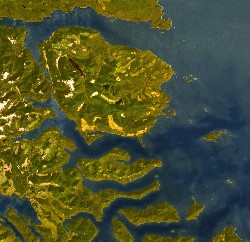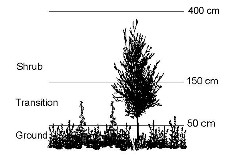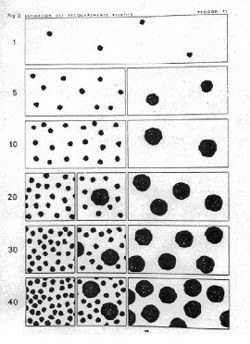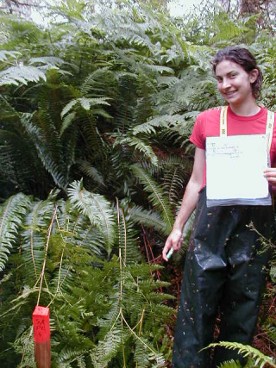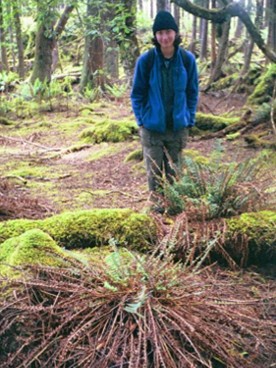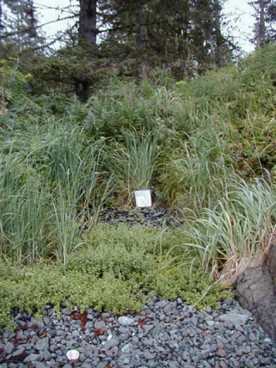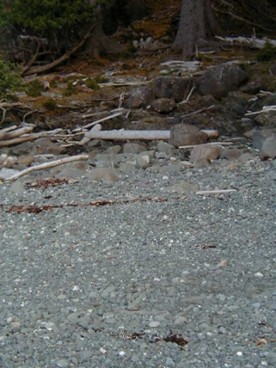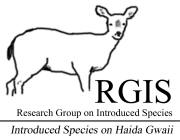

- Menu
- Home
- Haida Gwaii
- Introduced Species
- RGIS
- What did we learn?
- Research
- Publications
- RGIS symposium
- School curriculum
- Contacts
- English
- Français
Effect of browsing history on the vegetation
Effects of different browsing histories on the understory |
||||||||
Aim & scope - Where & when - How - Main results - Conclusion - Scientific Publications |
||||||||
Aim and scope |
||||||||
|
||||||||
| return to top of page |
||||||||
Where and when |
||||||||
|
In 2000, Steve Stockton and co-wokers sampled the vegetation in permanent plots in the forest interior and along the shoreline on 7 islands situated in Laskeek Bay:
|
||||||||
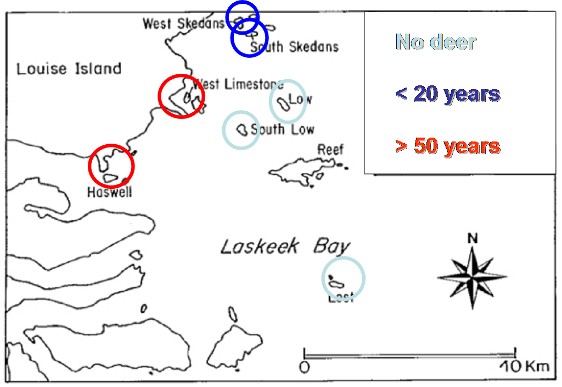 |
||||||||
| return to top of page |
||||||||
How |
||||||||
|
15 plots were established on each island:
|
||||||||
|
||||||||
return to top of page |
||||||||
Main Results |
||||||||
|
|
||||||||
|
||||||||
Changes in vegetation abundance associated to deer presence |
||||||||
Overall vegetation cover often exceeded 80% in the lower vegetation layers of forest interior plots on islands without deer and was less than 10% on the islands with deer for more than 50 years. |
||||||||
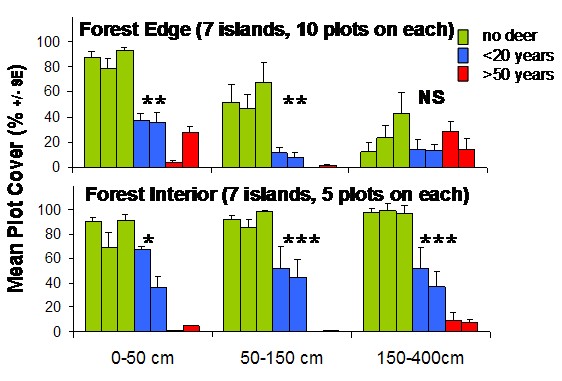 |
||||||||
Changes in vegetation diversity associated to deer presence |
||||||||
|
|
||||||||
 |
||||||||
Changes in vegetation structure and composition associated to deer presence |
||||||||
|
A Principal
Component Analysis is a statistical procedure that allows to represent complex data
on community composition in a two dimensional space and relative to habitat
variables. |
||||||||
 |
||||||||
Plots with positive scores on the horizontal axis are characterized by high values for vegetation cover and species richness in the understory. Plots with negative scores have low values for vegetation cover and species richness. Plots with positive scores on the vertical axis are rich in shrubs and ferns, those with negative scores are rich in forbes or grasses. |
||||||||
 |
||||||||
This analysis suggests that when time since deer colonisation increases:
|
||||||||
Conclusion |
||||||||
The longer deer
are present on an island:
|
||||||||
Scientific Publications |
||||||||
|
||||||||
return to top of page |
